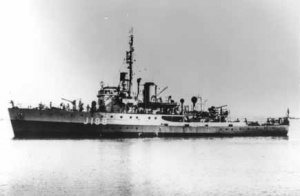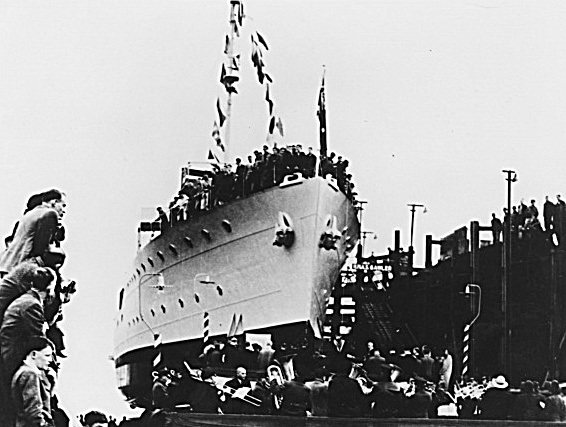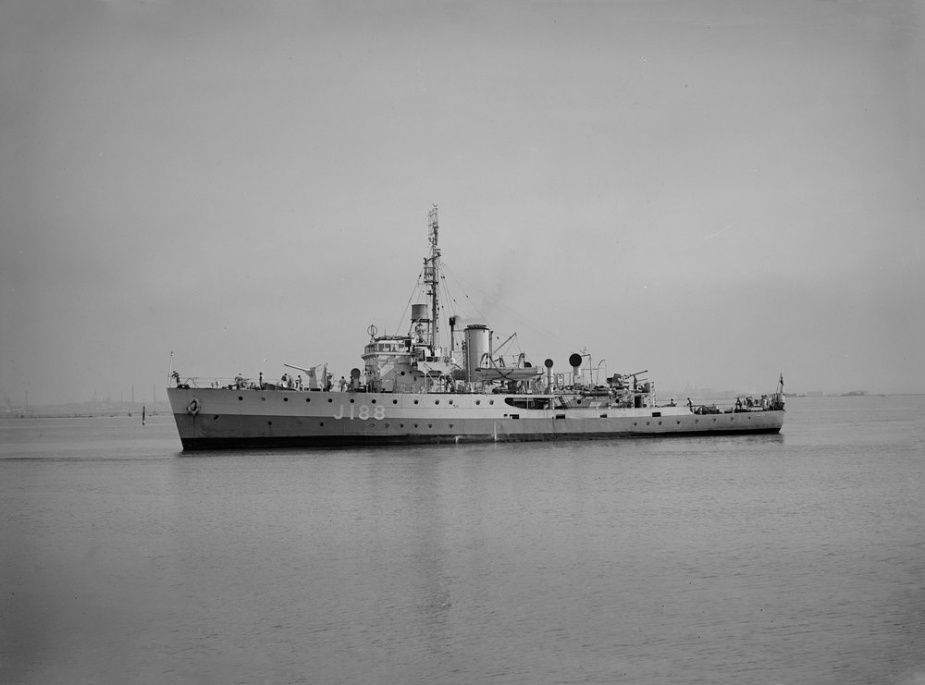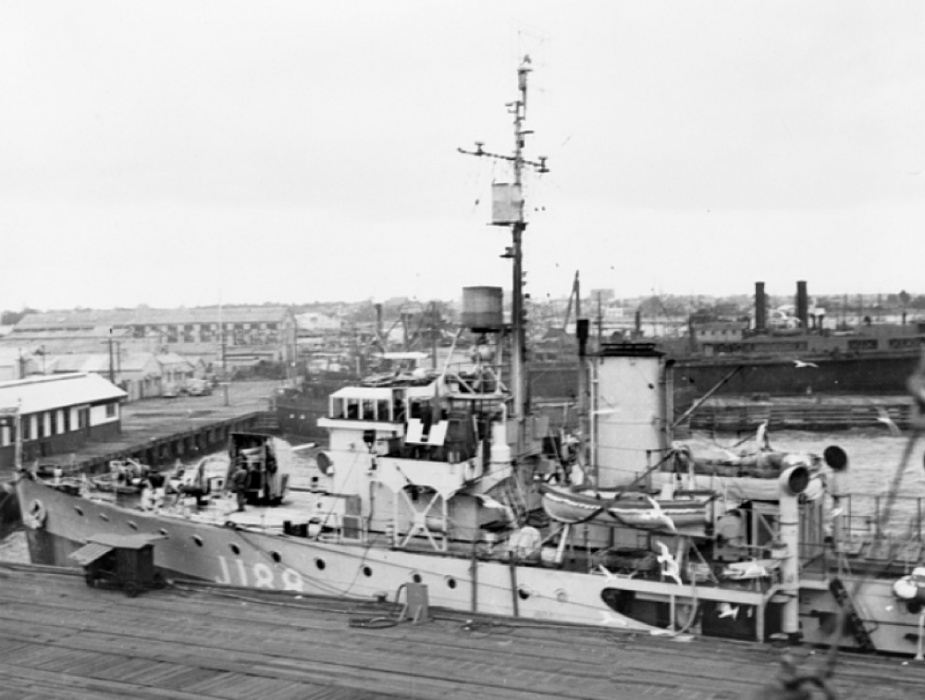HMAS Gawler (I)
| Class |
Bathurst Class |
|---|---|
| Type |
Australian Minesweeper |
| Pennant |
J188 |
| Builder |
Broken Hill Pty Ltd |
| Laid Down |
24 January 1941 |
| Launched |
4 October 1941 |
| Launched by |
Lady Dugan, wife of the Governor of Victoria |
| Commissioned |
14 August 1942 |
| Decommissioned |
5 April 1946 |
| Dimensions & Displacement | |
| Displacement | 650 tons |
| Length | 186 feet |
| Beam | 31 feet |
| Draught | 8 feet 6 inches |
| Performance | |
| Speed | 15 knots |
| Complement | |
| Crew | 85 |
| Propulsion | |
| Machinery | Triple expansion, 2 shafts |
| Horsepower | 2000 |
| Armament | |
| Guns |
|
| Other Armament |
|
| Awards | |
| Battle Honours | |
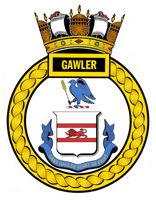
HMAS Gawler was one of sixty Australian Minesweepers (commonly known as corvettes) built during World War II in Australian shipyards as part of the Commonwealth Government's wartime shipbuilding programme. Twenty (including Gawler) were built on Admiralty order but manned and commissioned by the Royal Australian Navy. Thirty six were built for the Royal Australian Navy and four for the Royal Indian Navy.
HMAS Gawler was the first RAN warship to carry the name of Gawler, a country town located in South Australia. She was laid down at Broken Hill Pty Ltd, Whyalla, South Australia on 24 January 1941. She was launched on 4 October 1941 by Lady Ruby Dugan (née Abbott), wife of the Governor of Victoria. Lady Dugan also launched HMAS Geelong, also a Bathurst Class corvette, on 22 April 1941 at the Melbourne Harbour Trust, Williamstown, Victoria. Lady Dugan holds the distinction of being the only woman to launch two RAN corvettes.
Gawler commissioned at Whyalla on 14 August 1942 under the command of Lieutenant Commander William J Seymour RN (Emergency).
Following completion of her working up period and trials in September 1942, Gawler proceeded to Fremantle. After a brief period of local anti-submarine patrol duty she was sent to join the British Eastern Fleet at Colombo. From January to April 1943 she served as an escort vessel to Indian Ocean convoys.
In mid-May 1943 Gawler proceeded to the Mediterranean where, with sister ships HMA Ships Ipswich,Lismore and Maryborough, she formed the 21st Minesweeping Flotilla. However, her service in the Mediterranean, from May to October 1943, was mainly confined to escort duty. In July 1943 she took part in the invasion of Sicily. In August Gawler entered the Atlantic to rendezvous with a Mediterranean bound convoy for which she acted as part escort. Gawler returned to the Indian Ocean at the end of October 1943 and rejoined the Eastern Fleet, having steamed 52,000 miles on war service.
Following further Indian Ocean convoy escort duty, Gawler spent January and February 1944 refitting at Durban. Escort duty was resumed in April 1944 and thereafter, until January 1945, she was constantly in service escorting convoys between Indian ports and between India and Aden.
On 26 January 1945 Gawler detached from the Eastern Fleet and departed from Ceylon to return to Australia. A long refit was completed at Adelaide in April 1945 and the ship then proceeded to the United States Navy base at Manus, in the Admiralty Islands, where she became an operative unit of the British Pacific Fleet.
In September 1945 Gawler proceeded to Hong Kong where, in company with several sister ships attached to the British Pacific Fleet, she spent several weeks on minesweeping and on anti-piracy patrol duties. On 17 October 1945 she arrived at Morotai Island and thereafter until the end of the year was one of a group of Australian warships engaged in surveillance of previously enemy occupied territory in the Moluccas and adjacent areas.
Gawler returned to Australia in February 1946. She paid off at Sydney on 5 April 1946 having steamed 129,845 miles. She recommissioned the same day as HMS Gawler and on 21 May 1946, sailed for Colombo in company with her sister ships Launceston and Pirie. All were destined for transfer to the Turkish Navy.
Shortly afterwards she was transferred to the Turkish Navy and renamed Ayvalik. 'Jane's Fighting Ships' reported that she was withdrawn from service in 1963, her name then being transferred to her sister ship Antalya (ex HMAS Geraldton).
Note: This video is hosted on YouTube. Department of Defence users will not be able to view this video on the Defence Protected Network.
This cine film has been placed online as part of the Sea Power Centre - Australia's ongoing archival digitisation program.
Further reading
- ‘The Corvettes: Forgotten Ships of the Royal Australian Navy’ by Iris Nesdale - published by the author, October, 1982.
- ‘Notable Service to the Empire: Australian Corvettes and the British Pacific Fleet, 1944-45’ by Hugh Campbell - published by Naval Historical Society of Australia Inc, 1995.
- ‘Corvettes - Little Ships for Big Men’ by Frank B Walker - published by Kingfisher Press, NSW, 1996.
- ‘The Australian Centenary History of Defence Volume III, The Royal Australian Navy’ edited by David Stevens, Oxford University Press, South Melbourne, Victoria, Australia, 2001.

